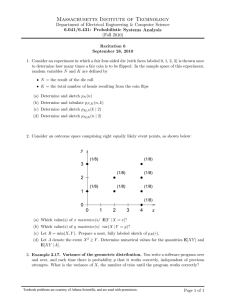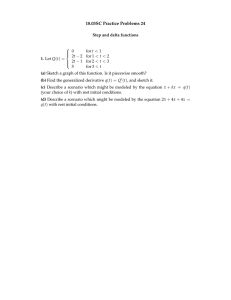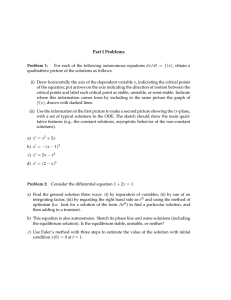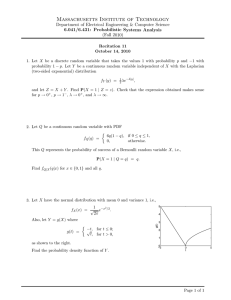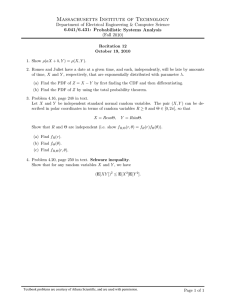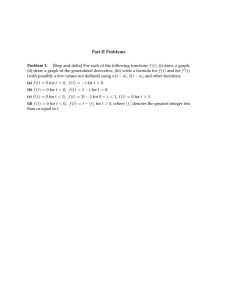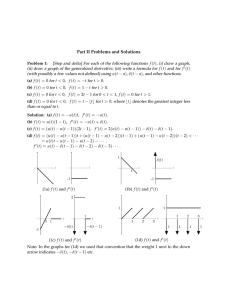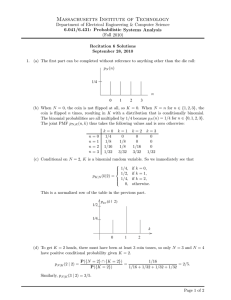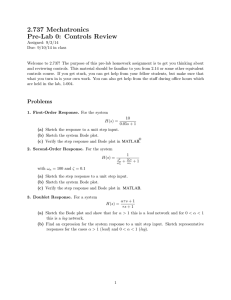Massachusetts Institute of Technology
advertisement
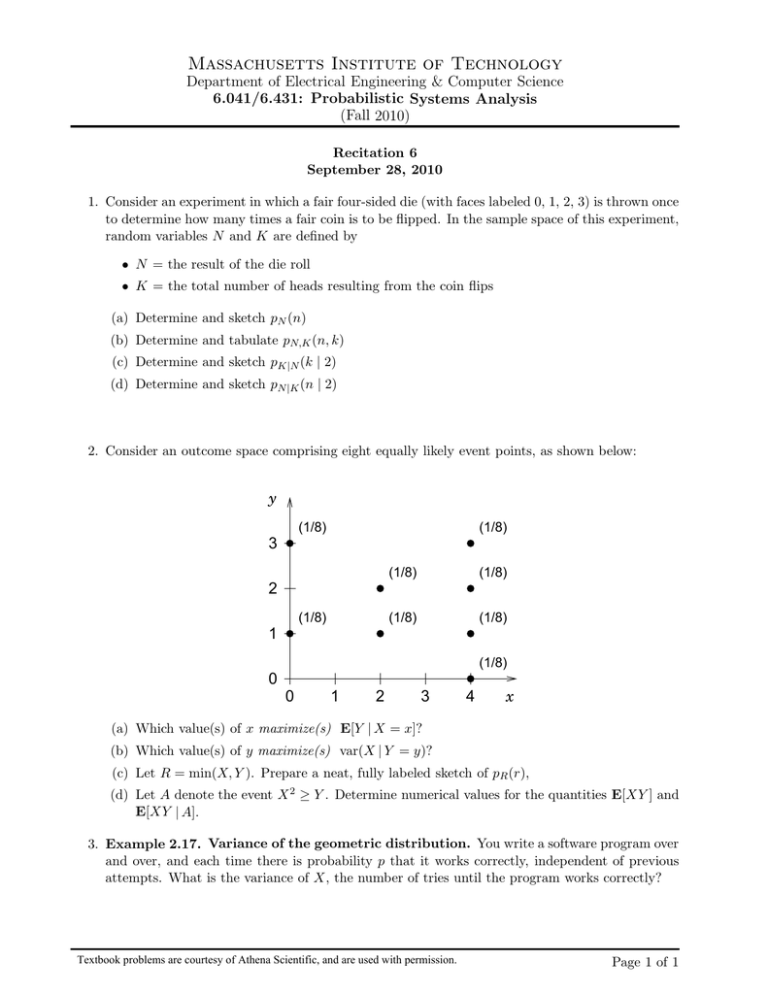
Massachusetts Institute of Technology Department of Electrical Engineering & Computer Science 6.041/6.431: Probabilistic Systems Analysis (Fall 2010) Recitation 6 September 28, 2010 1. Consider an experiment in which a fair four-sided die (with faces labeled 0, 1, 2, 3) is thrown once to determine how many times a fair coin is to be flipped. In the sample space of this experiment, random variables N and K are defined by • N = the result of the die roll • K = the total number of heads resulting from the coin flips (a) Determine and sketch pN (n) (b) Determine and tabulate pN,K (n, k) (c) Determine and sketch pK|N (k | 2) (d) Determine and sketch pN |K (n | 2) 2. Consider an outcome space comprising eight equally likely event points, as shown below: y (1/8) (1/8) 3 (1/8) (1/8) (1/8) (1/8) 2 (1/8) 1 (1/8) 0 0 1 2 3 4 x (a) Which value(s) of x maximize(s) E[Y | X = x]? (b) Which value(s) of y maximize(s) var(X | Y = y)? (c) Let R = min(X, Y ). Prepare a neat, fully labeled sketch of pR (r), (d) Let A denote the event X 2 ≥ Y . Determine numerical values for the quantities E[XY ] and E[XY | A]. 3. Example 2.17. Variance of the geometric distribution. You write a software program over and over, and each time there is probability p that it works correctly, independent of previous attempts. What is the variance of X, the number of tries until the program works correctly? Textbook problems are courtesy of Athena Scientific, and are used with permission. Page 1 of 1 MIT OpenCourseWare http://ocw.mit.edu 6.041 / 6.431 Probabilistic Systems Analysis and Applied Probability Fall 2010 For information about citing these materials or our Terms of Use, visit: http://ocw.mit.edu/terms.
